Threat to ground-nesting birds in Lincolnshire from visitor influx
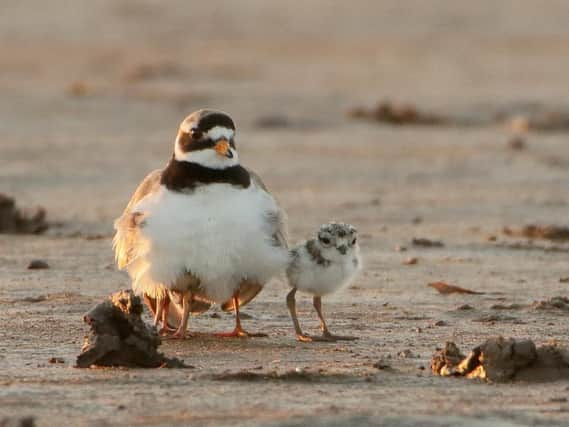

Ground-nesting birds are some of the most threatened bird species in the UK, with many of them on the 'red list' of birds that need urgent action.
However, as reserves across the county get busier as Covid-19 restrictions are lifted, wardens fear the greater influx of visitors could have "dramatic effects"
Advertisement
Hide AdAdvertisement
Hide AdSome of the birds are so clever at camouflaging their eggs, visitors might not even realise they are right on top of a nest, warns Kev Wilson, Gibraltar Point National Nature Reserve warden for Lincolnshire Wildlife Trust
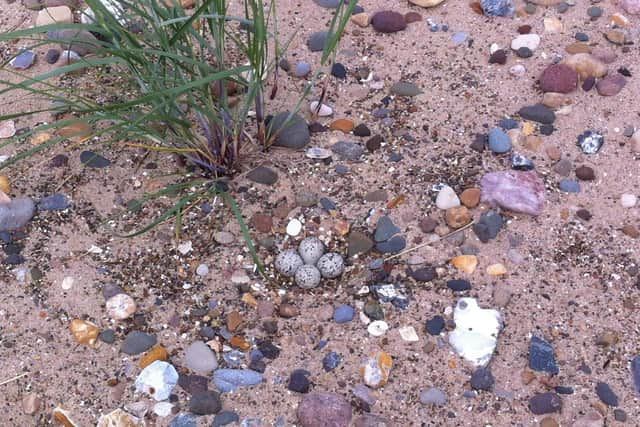

The recent good weather saw an "incredibly busy holiday week".
"Visitors have been all over the site in large numbers," he said. "I am hoping that we can ask visitors to take care of ground-nesting birds - particularly Ringed Plovers, Oystercatchers and Little Terns on the open shingle and skylarks, meadow pipits and reed buntings on the foredunes.
"One of the issues that we have at Gibraltar Point is that, whilst we set up a shorebird sanctuary to protect many of the important nesting birds, there are others that nest in areas where the public have access.
Advertisement
Hide AdAdvertisement
Hide Ad"In past years, these often remote areas were not frequently walked over by visitors, but now, footfall is increasing everywhere and so the likelihood of ground-nesting birds having eggs and chicks trampled is much higher.
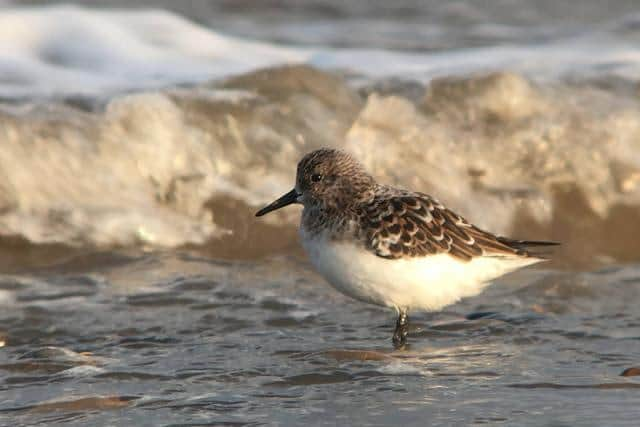

"Many people do not realise that some of our most important species like Little Tern, Ringed Plover, Oystercatcher and Skylark actually nest on the ground, even in seemingly inhospitable areas such as open shingle.
"Also, many wading birds such as Curlew, redshank, sanderling and grey plover will be feeding along the shoreline and are easily disturbed by walkers getting too close and particularly dogs.
"Dogs are not permitted on the beach at Gibraltar Point. We also have to protect a small number of Harbour seal pups which are born here over the summer months.
Advertisement
Hide AdAdvertisement
Hide Ad"We are still getting issues with quad bikes and trials bikes coming in from the north end which is also disturbing nesting birds."
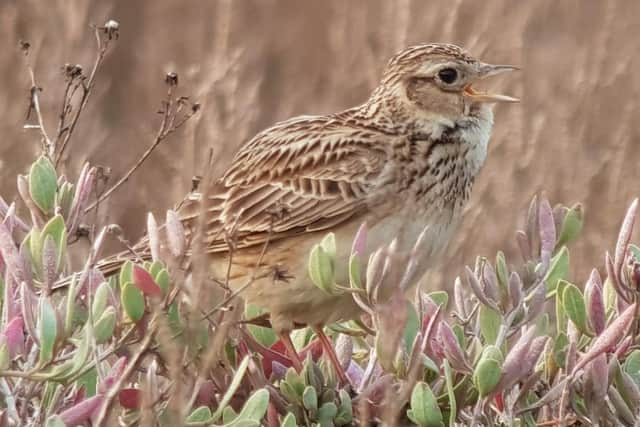

Our newspaper recently teamed up with the nature reserve and Skegness police to highlight the problem of people riding off-road motorbikes and quad bikes along coastal paths and the beach.
As a result local officers will be carrying out additional patrols against the illegal and anti-social use of these bikes, targeting those responsible who are often uninsured and do not have a driving licence.
Coast Insp Colin Haigh said “We rely on information from the public to guide our resources to where they are needed most, so it is important that people continue to report these issues, so that we can tackle them.”
Advertisement
Hide AdAdvertisement
Hide AdAnyone concerned about the unsafe driving is asked to call 999 To report off-road vehicle drivers causing nuisance or annoyance call 101 or call Crimestoppers on 0800 555 111.
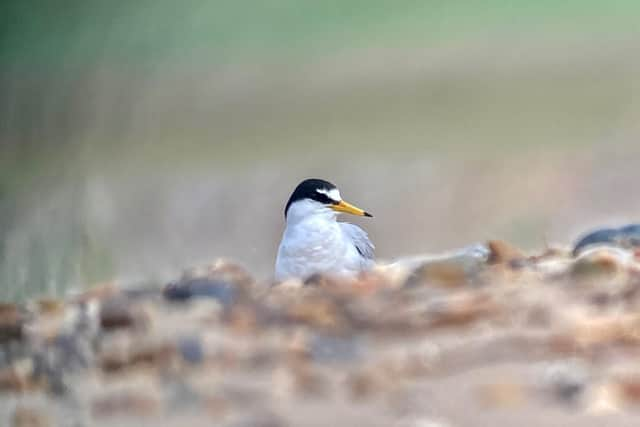

THREAT TO COUNTY'S INLAND RESERVES
Although visitors with dogs are welcomed to all of the county's reserves, the National Trust is appealing to them to be kind to wildlife at this important time of year.
National Trust Lead Ranger at Belton House, Chris Shaw said: “We welcome visitors with dogs at our places in Lincolnshire, like Belton House and Gunby Estate Hall and Gardens, but at this time of year in particular we do ask visitors to be kind to wildlife by keeping their dogs on a short lead.
"Vulnerable ground nesting birds are raising their young from early March until the end of July, and a lot of livestock are either pregnant or raising their lambs and calves.
Advertisement
Hide AdAdvertisement
Hide Ad"At Belton in particular it’s now fawning time, when you can often spot young fawns hiding in the long grass, so we ask visitors to keep their dogs on a short lead in order to protect the wildlife that call these beautiful places home.”
BIRDS UNDER THREAT
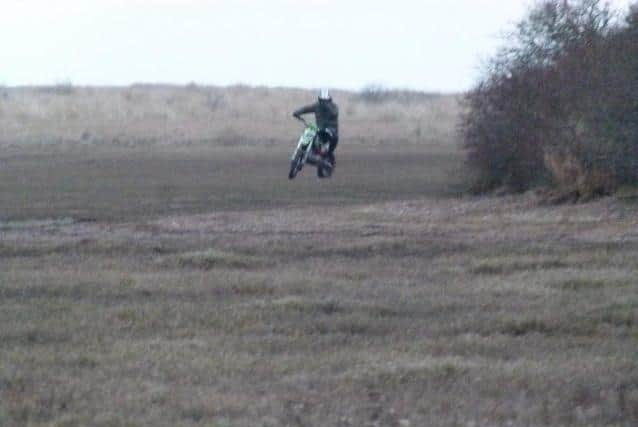

RINGED PLOVER
Ringed Plovers often nest in open shingle/upper beach habitat where the eggs are camouflaged. This is designed to work against any predators that may eat the eggs but it puts them at a disadvantage where people are walking across the open beach area and don’t see the nests until its too late. Similarly, the chicks are well camouflaged and they lie flat on the beach when any threat is identified. The parent birds are not particularly aggressive at fighting off any predator but they try to lead any predators away from the chicks by feigning injury – this ‘broken-wing display’ is aimed at luring the predator away with the prospect of an easy meal – only for the plover to fly off once it has provided sufficient distraction.
As well as the threat of being trampled or eaten, the clutches of Ringed Plover eggs are also in danger of being washed away by the high tides. A small team of wardens and volunteers had to protect the clutches of 10 pairs of Ringed Plovers over the late May high tides. Some nest scrapes had to be re-located to higher ground, whilst more clutches had to be lifted and kept warm while the tide swept over the nest sites – nest scrapes were then re-instated and the eggs returned once the tide had receded. Chicks from some of these nests are now hatching successfully.
LITTLE TERN
Spending the winter off the west coast of Africa, the Little Tern travels all the way to the UK to nest on beaches. Twenty years ago, there were five colonies supporting over 120 pairs of terns along the Lincolnshire coast. Today, Gibraltar Point is the only remaining site, with only 10-20 pairs attempting to nest.
SKYLARK
Advertisement
Hide AdAdvertisement
Hide AdOn a sunny day, skylarks can be heard as soon as you get out of the car park at Gibraltar Point and whilst it appears that we still have a good population on the Reserve, overall, their numbers have halved over the last 30 years in the UK. Whilst the males perform song flights up to 100 feet in the air, they nest on the ground. Those that nest in saltmarsh are at risk of having their nests flooded by the tide, whilst those on the outer dunes may get accidentally trampled.
SANDERING
Sanderling is one of the species of wading bird that rely on Gibraltar Point as a re-fuelling site while on spring migration on the way up to breeding grounds in Arctic Greenland. After a short breeding season before the autumn snow returns there, they return to our shores in late summer. As with the other wading birds, they feed on small shrimps, worms and shellfish on the mudflats and beach at low tide and then go to roost on the high ridges when the feeding grounds are covered at high tide. A count of 10,100 Sanderling roosting at Gibraltar Point in 2018 is probably the highest number ever recorded in the UK.
BIRDWATCJING LOCATIONS AT LINCOLNSHIRE WILDLIFE TRUST RESERVES
Anderby Marsh (Sea birds)
Known as Anderby Marsh, it will be transformed over time into a wildlife haven of traditional coastal grazing marsh and reedbed.
Barrow Haven Reedbed (Birdwatching)
Advertisement
Hide AdAdvertisement
Hide AdOne of the most important of the series of disused flooded clay pits on the Humber Bank.
Baston Fen (Birdwatching)
Baston fen is a long tract of permanent pasture, which is flooded in winter and attracts large numbers of wildfowl.
Overwintering birds
Boultham Mere (Birdwatching)
An attractive lake with beds of reed and sedge, and emergent vegetation.
Chapel Pit (Birdwatching)
A flooded pit with marginal reed beds and aquatic plants, such as water-crowfoot and great reed mace.
Dawson City Clay Pits (Birdwatching)
Advertisement
Hide AdAdvertisement
Hide AdTwo disused clay pits with associated reedbeds, wetland habitats, species-rich grassland, scrub and pasture.
Donna Nook National Nature Reserve (Sea birds and seals)
Extensive dunes and shore between North Somercotes and Saltfleet.
Duke's Covert & Copper Hill (Wildflowers)
The roadside verges at Copper Hill are protected under Lincolnshire's Protected Roadside Verge Scheme. The adjoining Duke's Covert is an old limestone grassland.
Epworth Turbary (Historical interest)
A relict of a raised bog, this reserve is of considerable historic and scientific interest.
Fairfield Pit (Wheelchair friendly)
Advertisement
Hide AdAdvertisement
Hide AdClay pit which is attractive to wading birds and surface-feeding wildfowl.
Far Ings National Nature Reserve (Wheelchair friendly)
A chain of flooded clay pits and extensive reedbeds along the Humber Bank.
Frampton Marsh (Overwintering birds)
Frampton Marsh is part of the most mature saltmarsh in the Wash and is exceptionally rich in plants, birds and invertebrates.
Haxey Turbary (Birdwatching)
The reserve is a relict of bog that has been extensively dug for peat and subsequently colonised by birch.
Huttoft Bank Pit (Overwintering birds)
Advertisement
Hide AdAdvertisement
Hide AdClay pit with large open water area as well as extensive reedbeds.
Killingholme Haven Pits (Birdwatching)
A complex of four flooded clay pits with associated rough grassland and scrub.
Kirkby Gravel Pits (Birdwatching)
This reserve is an excellent birdwatching site. In spring and summer the shallow water, with its numerous spits and islands, suits many breeding birds.
Langholme Wood (Birdwatching)
Langholme Wood is a birch/oak woodland with open heathland areas.
Messingham Sand Quarry (Birdwatching)
A series of lagoons created by the extraction of sand.
Pasture Wharf (Birdwatching)
Advertisement
Hide AdAdvertisement
Hide AdA mosaic of open water, reedbeds and intervening rough grassland and scrub.
Pinchbeck Slipe (Overwintering birds)
Grassland which floods when river levels are high, wet marsh pools, borrow pits and a roadside dyke.
Red Hill (Stunning views)
Steep chalk escarpment and grassland.
Sandilands Pit (Overwintering birds)
Flooded clay pit which supports a variety of birds.
Scotton Common (Reptiles)
The largest remaining fragment of the once extensive heathlands of Scotton Common.
Snipe Dales (Spring migrant birds)
Nature reserve and country park consisting of steep-sided valleys fretted by streams.
Stanton's Pit (Overwintering birds)
Advertisement
Hide AdAdvertisement
Hide AdThe area was formerly a sand pit and the main interest is ornithological.
Surfleet Lows (Overwintering birds)
Old grassland which is subject to winter flooding and a small wet woodland.
Willow Tree Fen (Birdwatching)
Former arable land that has been restored to reedbeds, shallow meres, seasonally flooded pastures and hay meadows.
Wolla Bank Pit (Getting away from it all)
Flooded clay pits with extensive reed beds.
Wolla Bank Reedbed (Getting away from it all)
Woodhall Spa Airfield Nature Reserve (Historical interest)
A place where visitors can share in the unique and peaceful atmosphere of this former airfield.
Advertisement
Hide AdAdvertisement
Hide AdFull list of nature reserves in Lincolnshire can be found by visiting https://www.lincstrust.org.uk.Read more on the threat to nature reserves in Lincolnshire